Heather Jones: How did you first become involved in the arts and what led you to pursue postgraduate study in studio art?
Mari Kolbeinson: From a very young age, I loved to draw and paint. My grandmother was a teacher and a hobby painter and encouraged me from early on. She gave me my first easel. I went to Forus VGS and specialised in form, colour and drawing, but it was not until I went on an exchange to a college in the UK that I first started to get an impression of what art was, and that you could actually do this as a profession. The exchange inspired me to pursue my bachelor degree in Fine Art at Kingston University, outside of London. After graduating with my BA I returned to Norway, but already knew that I wanted to go on to pursue a postgraduate degree. There was so much still unresolved in my practice, and I was eager to continue straight away. I did not have much of a network here in Norway, so I decided to do my MA in Bergen.
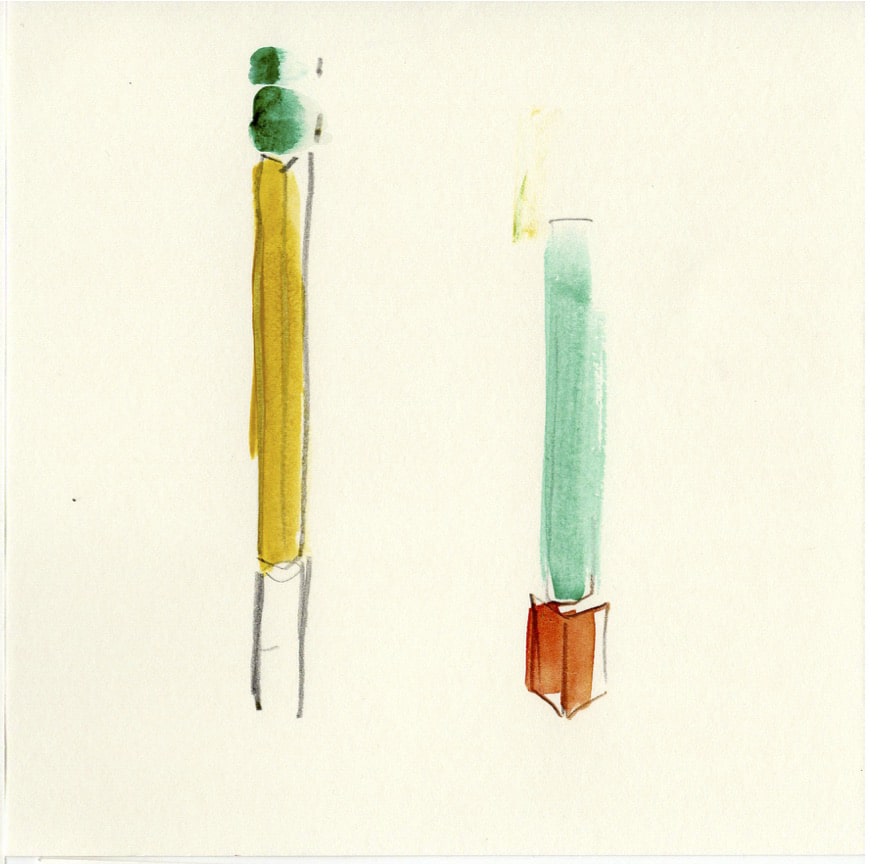
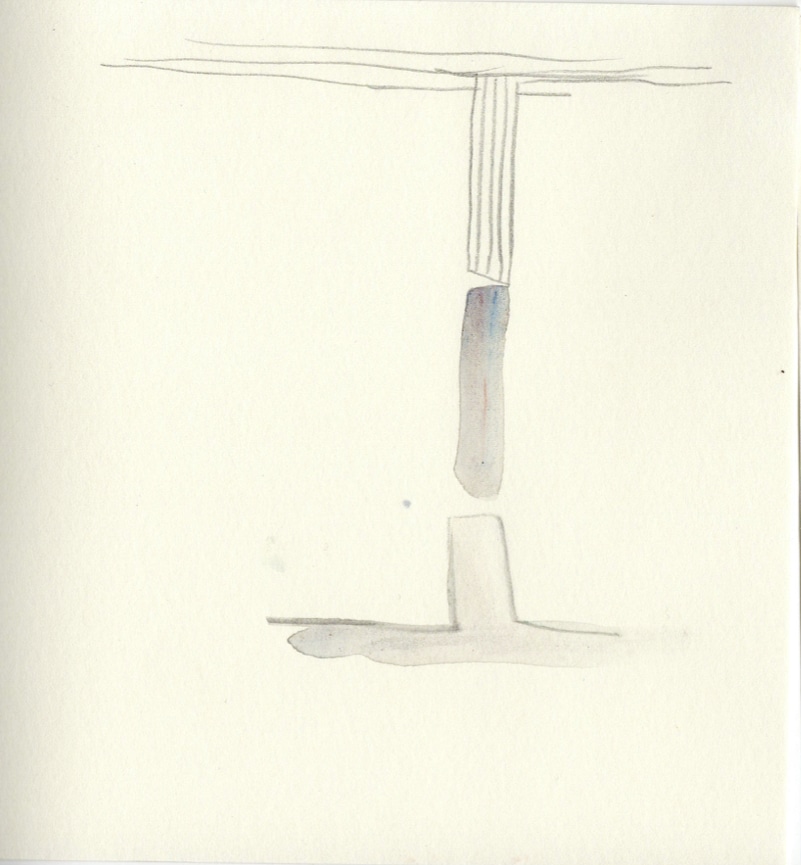

HJ: Your work has been described as a detailed dissection of painting as a medium, a metaphor for human relations, and a study in multi-media abstraction. It has also been compared to art movements such as concretism, minimalism, abstract expressionism and Bauhaus. How would you define your own work, and do you see your work in relationship to any specific art historical lineage?
MK: I see my work both as sculpture and painting, existing somewhere in between those fields. From art historical movements I am foremost influenced by the Neo Concrete movement which took place in the 1950s/60s Brazil. The Neo concrete artists were influenced by European art, movements such as Bauhaus, Constructivism, Plasticism, and different kinds of abstraction. But where the Europeans used forms and colours more as symbols, trying to make an utopian language, the Neo concretes tried to use the abstract language to connect art with life. They were experimental, and wanted to create works that also were sensory, political, poetic and personal.
The piece I did for my MA exhibition might be the most clear example of this influence. This was a minimal piece, a piece of fabric that became a sculpture/painting when held by the body, only for a few seconds daily, until it fell to the floor again. A simple gesture where the body became the support structure of the painting unfolded in space.
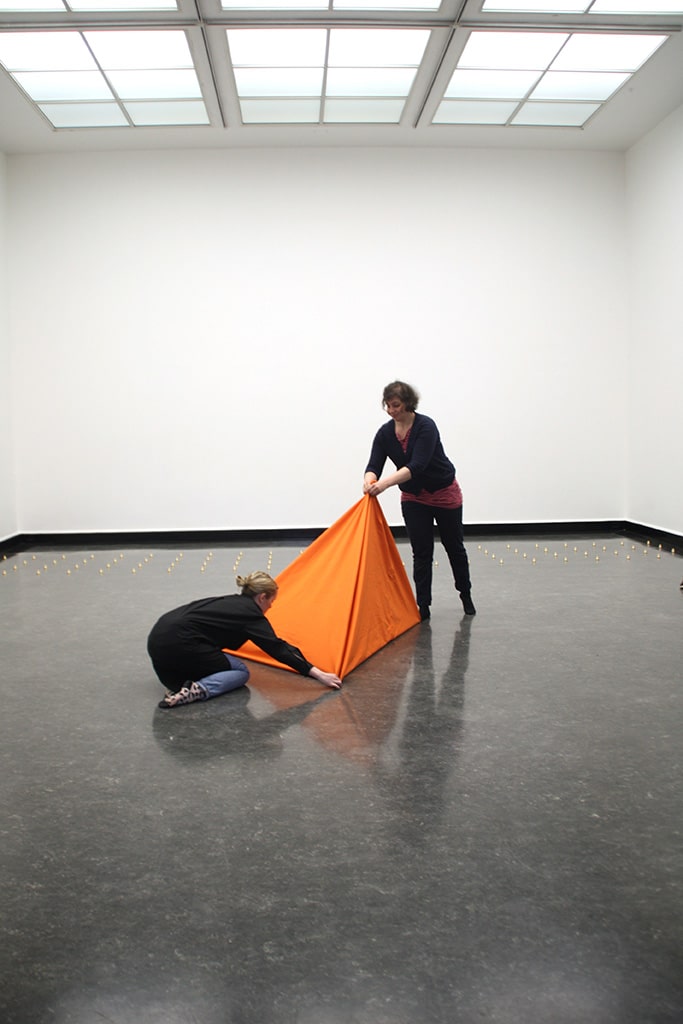
HJ: While conceptually rooted in painting, the media of your work often changes and includes sculptural elements, performative practices, and even video. Yet your body of work does seem to form a cohesive whole. Can you describe your working process?
MK: I have been working very intensively in a collaborative project for the past 6 months, so I feel a bit out of touch with my own working process. However, I normally keep an ongoing process, where each artwork builds on an experience with a prior work. In this way a dialogue between the pieces often occurs, and I find them working better in series. Since my graduation from my MA in Bergen, I have been mainly interested in the relationship between sculpture, habitat, support structures and the body. I often create fragile constructions, and base these on watercolour paintings, drawings and models. At the core of my visual language is often my exploration of support structures, which I gather at urban trips in cities and while traveling. In addition to this I keep a small drawing pad with me every day, and if I walk past something that catches my eye, I capture it on paper. This can be an interesting form, or shape, or compilation of objects. I am inspired by urban landscapes, how objects on construction sites are placed and assembled, and the temporality of this placement.
In addition to this I try to write letters daily about my work and process. Some periods when I am occupied with other artistic practises, and I am not making as much work, this is very useful. It helps me to stay in contact with my own work. Although never sent, I direct these towards real people, which helps me become less internal within my creative thought process.
HJ: You are originally from Stavanger and have studied in London, Brazil, and eventually received your MA from the Academy of Fine Arts in Bergen. What was the impetus behind your return to Stavanger, and does working in Stavanger offer any benefits and/or challenges in comparison to the other cities you have lived in?
MK: I returned to Stavanger after living and working in London for two years after I graduated with my MA. TOU had an Open Call for a studio for establishing artists, I applied and received a space. London is a very expensive place to live for artists, and the prospects of a free studio, with heating and big windows was very appealing at the time. Brexit had just been announced and London was generally a depressed place at the time, with a lot of international friends moving. So it felt like a good time to move on.
Stavanger is a very good place to live and make work. It took me some time to get settled in here, but now I really enjoy it. There is a lot of opportunity/space and support to realise projects, and people are generally very helpful.
London is great for inspiration, with all the exhibitions and artists working there. This was a very inspiring energy to be working in, but at times overwhelming and distracting. What I miss is all the art supplies stores! There are so many great, quirky stores, which specialise in paper, or wood, theatre, anything. Here in Stavanger, I normally buy my materials online.
HJ: In addition to your personal studio work at TOU, you’re also involved in running the projects spaces Bruksrommet and Studio17 in Stavanger. Do you see these endeavors as a part of your creative practice, or a separate project?
MK: I see these as a part of it, as I have come to look upon all the artistic activity I do as a part of forming my practice.
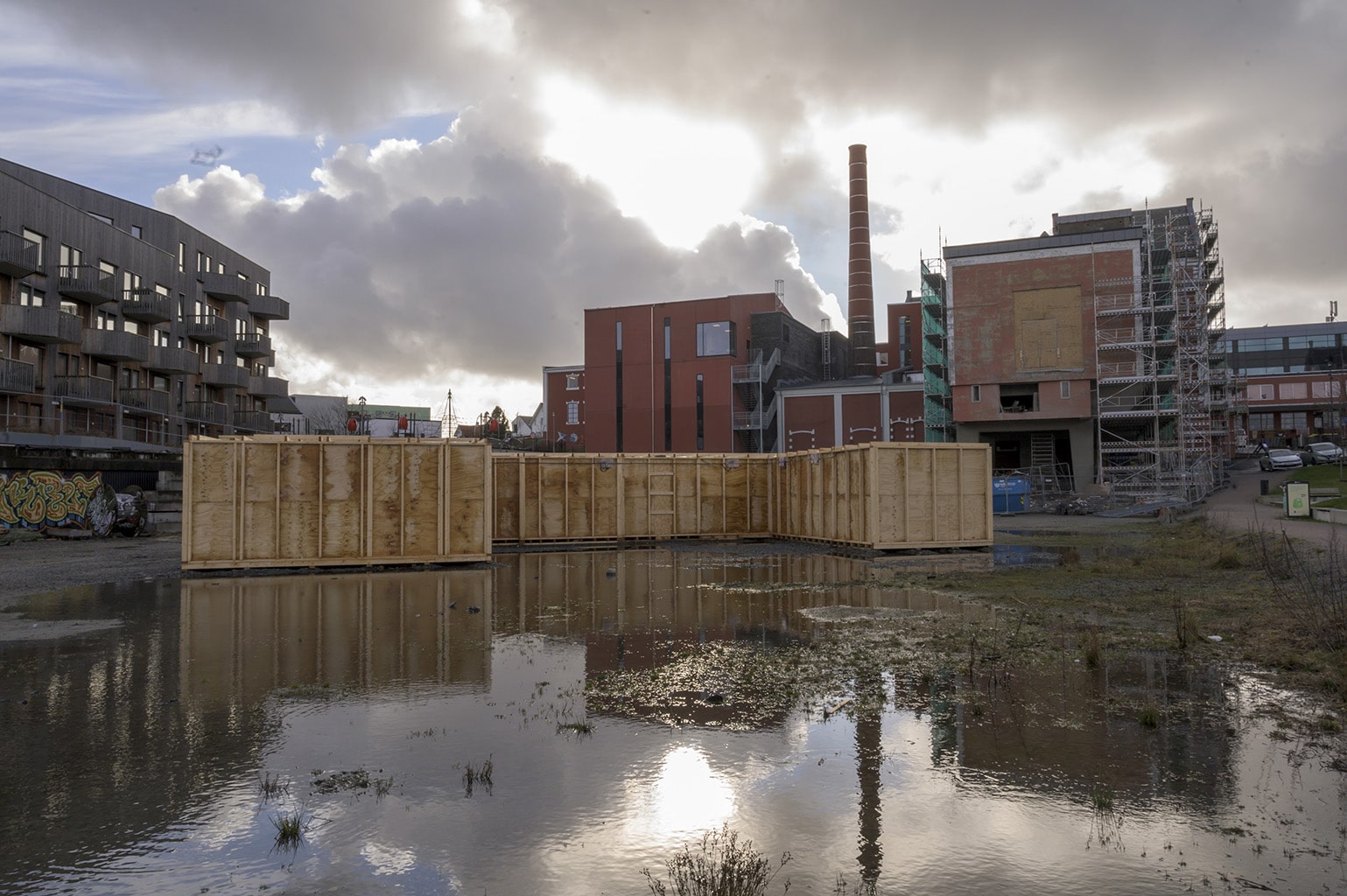
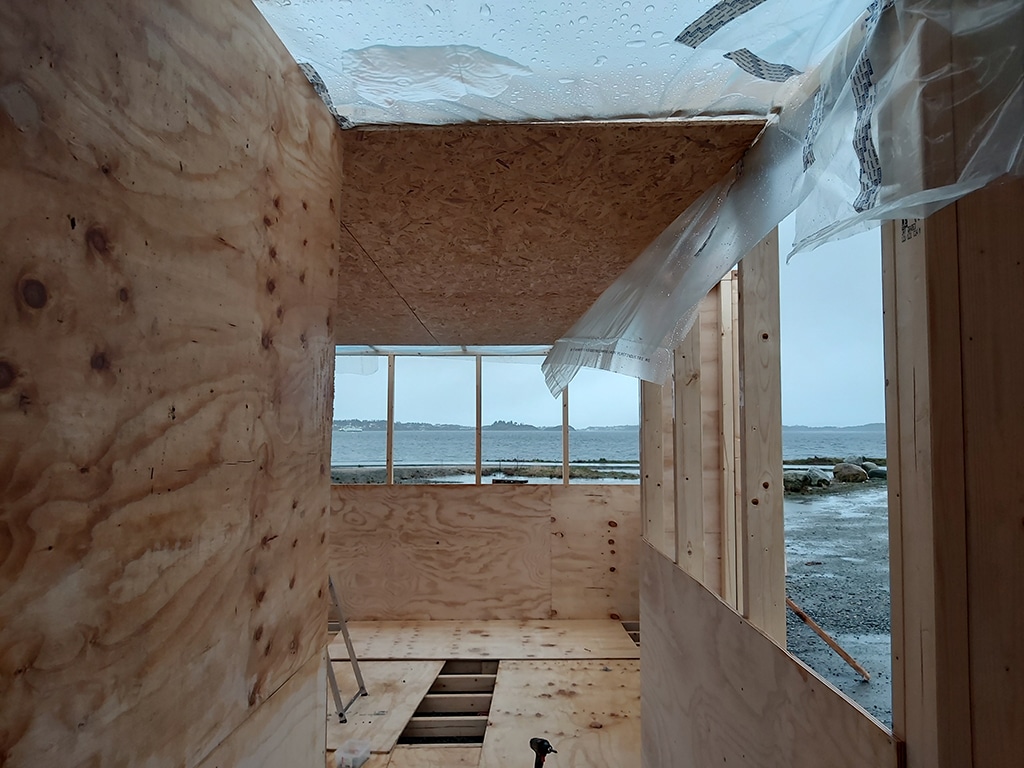
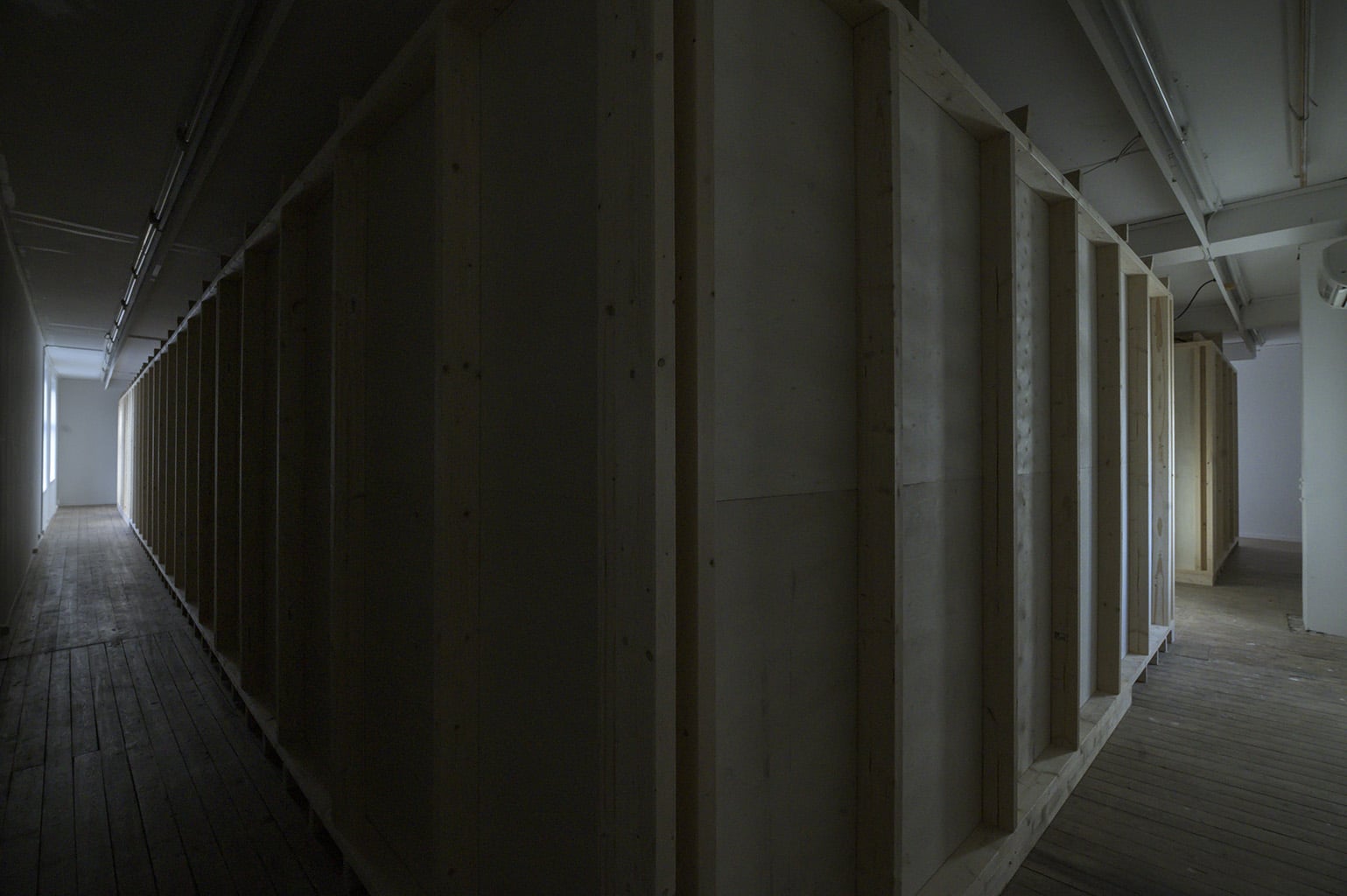
HJ: Are there any upcoming projects or works in progress that you can tell us about?
MK: For the past 6 months I have been predominantly working with the project SKAUS, in collaboration with the artist Markus Bråten and Håvard Sagen. Skaus is an endless exhibition, a hosting and occupying platform, which currently take place in Rogaland Kunstsenter and at the development lot next to TOU. We have tried to link these places together by creating one structure in two versions, which will evolve in different directions during the exhibition period. Through several project phases, we have invited a number of artists and artist collectives are invited to work site-specific and independently act upon the given structures and artistic conditions that have emerged in the space and on-site. This Thursday, March 5th was the exhibition opening of Phase 1, with the artists Linda Lamignan (RKS) and Andreas Amble (TOU). They had been working there for almost 3 weeks, and it was great to see what they had developed. Phase 2 is with the artists Ingeborg Kvame (RKS) and Ingrid Furre (TOU).
Apart from that I also just finished a commissioned piece for the Firestation in Sandnes. This was a very fragile piece, consisting of peeled of paint from abandoned houses on plexiglass. The piece has to do with decay, and the paint collected from Storhaug in Stavanger, and I am happy how that this works well in the context of the firestation.
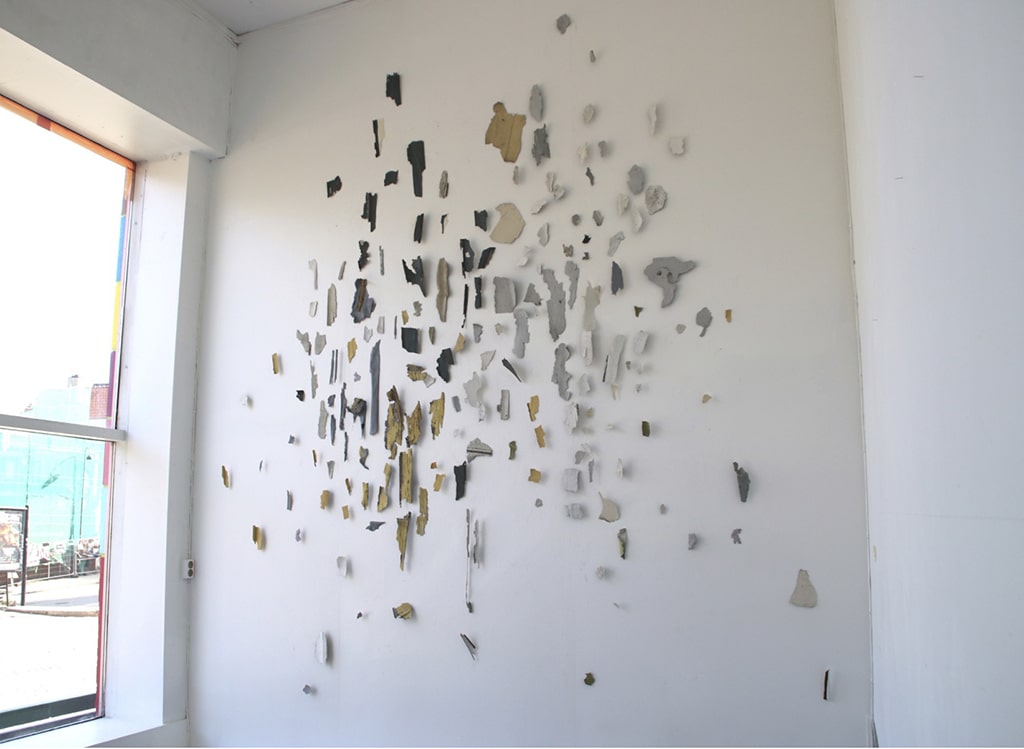
Mari Kolbeinson (b.1989) lives and works in Stavanger. She often creates fragile constructions, based on drawings and models, exploring the relationship between sculpture, habitat, support structures and the body. Questions around the notion of space and display are central to her work. She use an abstract visual language, influenced by movements such as Minimalism and the Neo concrete movement in Brazil. Kolbeinson studied at Kingston University, London (2009-12), Universidade do Estado do Rio de Janeiro (2014) and Bergen Academy of Art and Design (2013-15). Since then she has lived and worked in both Norway and London, and presented work at Rogaland Kunstsenter, Kunsthall Stavanger, Stavanger Kunstmuseum, Vestlandsutstillingen, and Castor Projects, London. Kolbeinson is currently a board member of the artist run galleries Studio17 and Bruksrommet, both i Stavanger.
Editors Note: The project SKAUS is temporarily paused/cancelled due to the governments Covid-19 regulations, however will open and continue as planned when the situation has passed.

